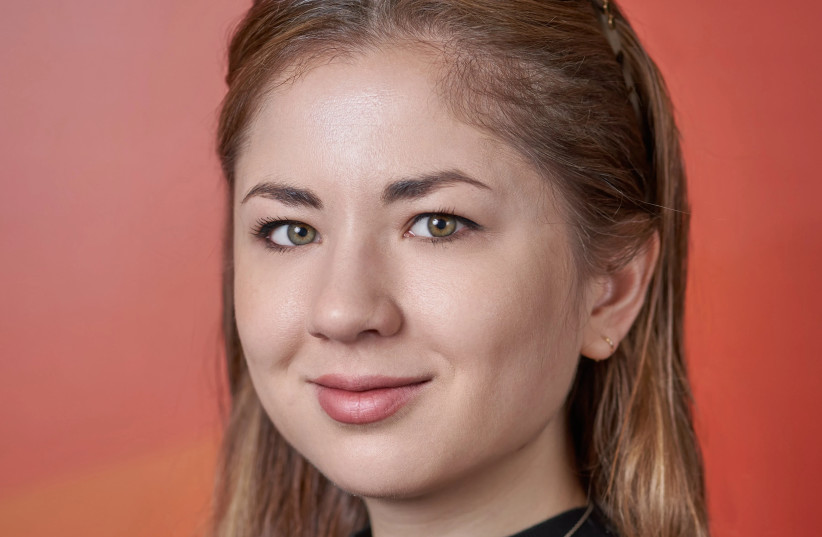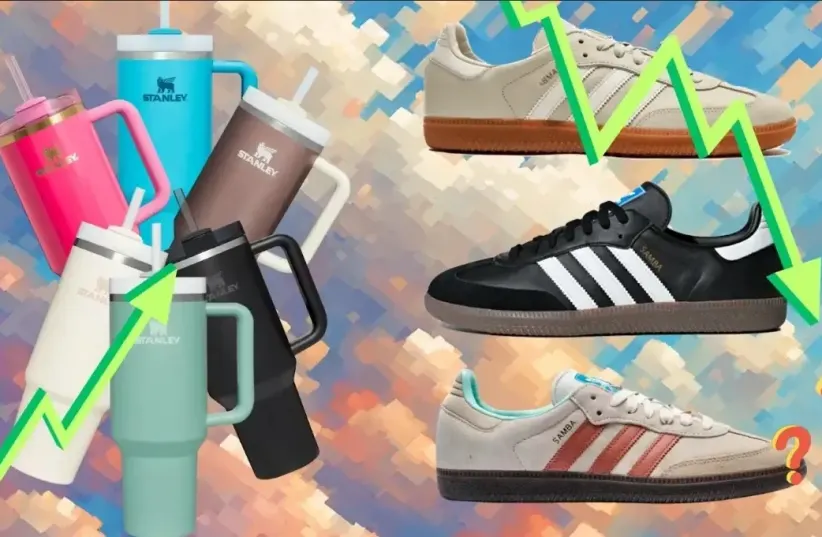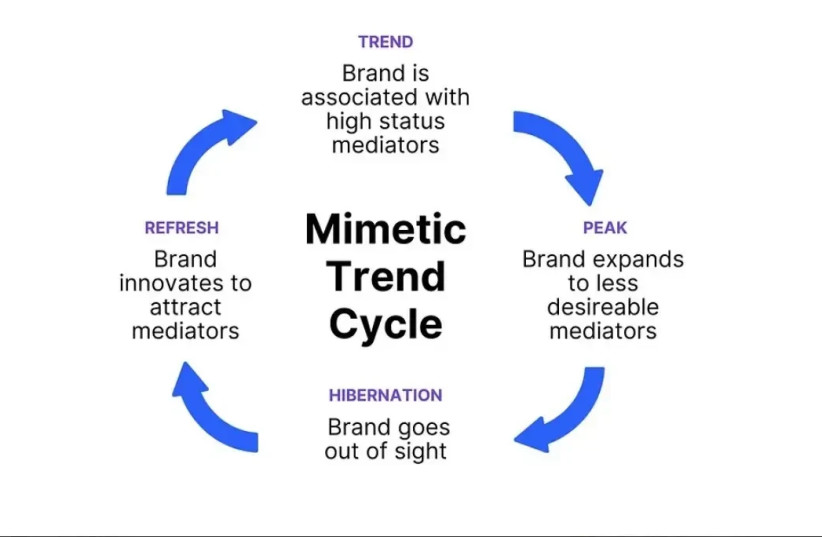Do I really want the Stanley Cup, or do I just want it because everyone else wants it? Everyone is talking about the Stanley Cup. Not about the hockey trophy - but about the brand of heating water bottles at a price of $50, which went from sales of $70 million to $750 million in the last few years after becoming a huge phenomenon on Tiktok. I don't really understand the enthusiasm for Stanley, but it may be too late for me, because the brand became so well-known, so quickly, only to be declared 'finished' in 2024: "These glasses are already on their way out. This is Stanley's peak . There's no more up here," Casey Lewis, a youth trends researcher, told Business Insider.
The Adidas Samba shoes are another product that has gained viral popularity in recent years. The shoe became a favorite of models like Bella Hadid and Hailey Bieber, who caused a situation where the shoes were everywhere and could not be bought because the stock ran out immediately. Despite the popularity of the samba, last weekend a friend of mine, who is considered a top stylist, referred to wearing the shoes as "cringe": "Every girl in New York wears [the samba]... it just doesn't look cool anymore." I couldn't help but agree.
This can be explained using Rene Girard's Mimetic Desire theory, according to which we do not want what we want, but what others want. especially others with status. This is not a new thing. This is also true in dating - if a high status person thinks someone else is attractive, you may find that person attractive too. This happens in careers - many students enter an MBA program wanting different things, and as they near graduation they are narrowed down to a small collection of career options sought after by the rest of the class. This is why celebrity partnerships work. It's not just a pair of shoes. These are Michael Jordan's shoes. The key to success is to choose the right mediator - a person whose passion affects others. In today's words: influencer.

PR firms are known to work to bring products to celebrities to build passion for the products, but celebrities are expensive.
So another strategy? Take another step back: don't influence the celebrity that influences your client; Influence the broker who influences the celebrity who influences your client. For example, in a talk at ADWEEK, the head of marketing for OOFOs (restorative flip-flops) talked about how their ideal intermediary is an athlete, but instead of connecting with an NBA player, which is expensive, they influence physiotherapists, trainers and doctors who are around the players.
Samba became popular because it was attached to the legs of an ideal mediator - Hailey Bieber. But as soon as the brand became the shoe that everyone wears, the middleman changed from the queen of fashion to everyone's brand. The middle class has dropped, because who wants to look like everyone else? Another friend of mine was more unequivocal: "Every girl wears the same: Samba sneakers, Aritzia blazer. It's like everyone else, where is your personality expressed? According to Gerard's theory, status is an important thing. To look influenced by the elite in this fashion Cool, you're one of them now. To look like everyone's influence? Less cool. The funny thing is, Samba has already gone this way from being a cool brand to an over-the-top brand that everyone wears, and then it faded away.
According to Hypebeast, the Samba was created in 1950 to help footballers maintain stability on cold football pitches, with three perforation pockets on the bottom of the shoe providing players with stability. The Samba design we know was launched in 1972, and in the 1970s the Samba was a big hit with football fans, who were probably influenced by professional footballers who wore the shoe. In the 1990s, the samba achieved cultural icon status when it was mentioned in the band Oasis and in the movie Trainspotting, but with the popularity in pop culture the population that bought the samba grew and it became everyone's shoe, losing its unique glamor and therefore its status and trendiness declined. After the working men and those with families became the middlemen, people with taste and football lovers already went looking for a fashionable shoe elsewhere.
How did samba get to the feet of the models for the first time?
Like OOFOs, Samba paid an intermediary in the community in which it is active - the indoor fashion community. According to HBX, Adidas has started planning for Samba's comeback in 2020. They have teamed up with British designer Grace Wales Bonner to release a limited edition of the Samba that will serve as a sought-after product among the fashion crowd. The shoe sold out instantly, prompting high bidding wars on sale sites like StockX and GOAT. A brand that fetches thousands of dollars above its original price means only one thing: that brand is considered highly sought after. Adidas continued with partnerships with Kith, Palace, and IRAK, which increased the hype.
The Samba shoe actually said about its owners that they are in the status of the early trend (high status), and they have the ability to also be said trends influencers of the trend (which is also a high status). Adidas also chose the right time to bring back the samba. The fashion cycle tends to repeat itself every 20 years. I guess it's no coincidence that Adidas hired a trendy fashion designer to refresh a shoe for the fashion crowd some 20 years after it went out of style.
Stanley President Terence Riley, did a similar thing: he influenced the influencers
Stanley turned a warming cup into a kind of thermos that was marketed to workers. But the founders of The Buy Guide, an online shopping blog and Instagram account focused on women, recommended "Stanley's Quencher" to their audience, who bought the product by the thousands.
The impact of The Buy Guide was enough for Stanley to change its strategy and start marketing more to women. Riley turned to marketing and influencer channels, which allowed women to influence other women, and sales soared. The problem is - what happens now? Stanley is probably making a nice profit on the margins, but it's not enough. The brand is at this point of change - it is so popular that it has a chance of losing status, so it must innovate. Last week Stanley's rival, Simple Modern, announced a rebranding in 2024. Others seem to think the bottle category is asking for new leadership and a new style.
How can your brand get into circulation and be trendy?
It is already customary to surf social networks to identify the influencers who will sell products: who has the followers we want? And who suits us very well? But the influencer market is a crowded one. An influencer with hundreds of thousands of followers will be too expensive. so what are we doing? Take a tip from Stanley - start with your customers - who is already influencing them? Be open to identifying partnerships that do not exactly fit the customer image you have built in your head, this is where the change can come from. Once you've identified your intermediaries (who influence your customer base), take a tip from Adidas and OOFOs - it's important to identify who influences these intermediaries. Who works with them? Who do they like to imitate? Who do they want to look like? Who do they trust? Who is the leader in their eyes?
And most importantly - stay fresh
Although Mimetic Desire Theory is part of human nature, no one wants to feel that their decisions are the result of trying to look like someone else. You have to be you. Creating demand through a lack of inventory can extend the period of time in which the brand will remain trendy, but if the program is too successful the brand will become too popular. There is always the option of waiting until the trend cycle returns in 20 years.

